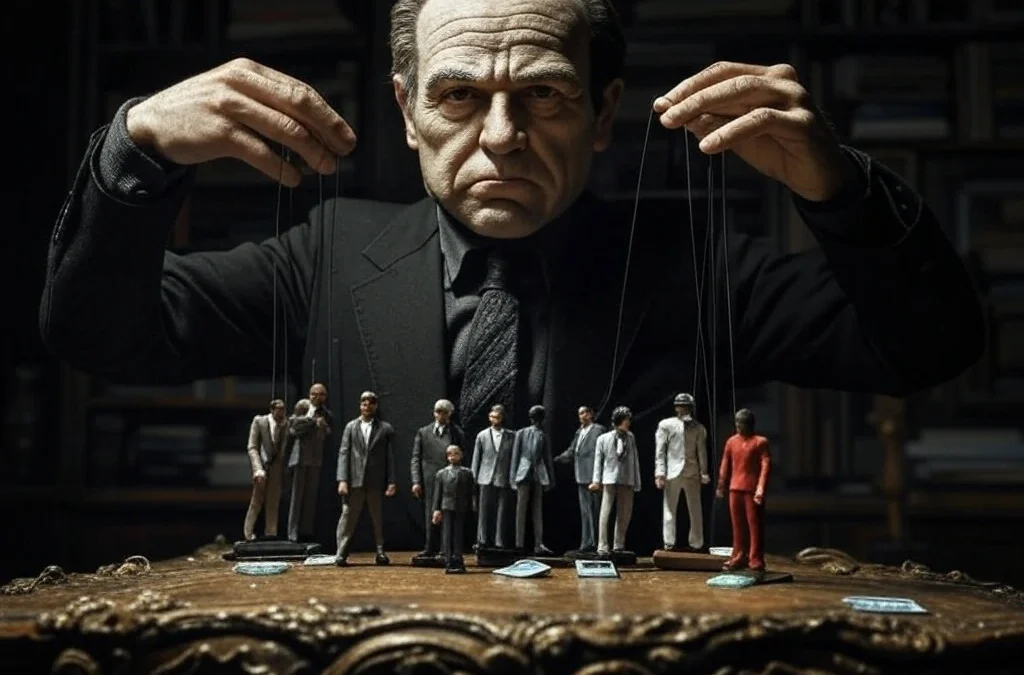When you read a book, watch a movie, or listen to a speech, there’s always a key message behind it. This main message is called the central idea—the big takeaway that ties everything together.
Think of the central idea as the foundation of a story or argument. Everything in the text—characters, events, or supporting facts—exists to reinforce this one core message. Without it, the content would feel scattered and disconnected.
For example, if you read a novel about a young athlete who overcomes failure to achieve success, the central idea might be “Hard work and perseverance lead to achievement.” If you watch a movie where a group of friends sticks together through tough times, the central idea could be “Friendship provides strength and support.”
Recognizing the central idea isn’t just useful for students analyzing literature—it’s a skill that applies to everyday life. When you can quickly spot the main message in an article, speech, or even a news report, you become a sharper reader and thinker.
What is a Central Idea?
A central idea is the main point or message that an author wants to communicate in a piece of writing. It is the core thought that ties everything together and helps the reader understand what the text is about. Whether you’re analyzing a book, an article, a speech, or even a movie, recognizing the central idea can help you grasp the deeper meaning of the content.
Think of the central idea as the backbone of a story or an argument. Every detail, example, and piece of evidence in the text should support this main idea. Unlike a simple topic, which is just a subject, a central idea tells us what the author is saying about that subject.
30 Best Examples of Central Ideas
Central ideas are everywhere—in books, movies, speeches, and even everyday conversations. They shape the message behind a story and help readers or viewers connect with deeper meanings. Below, you’ll find 30 powerful examples of central ideas, each with a clear explanation to help you recognize and understand how they work in different contexts.
1. Perseverance Leads to Success
Example: The story of Thomas Edison shows that hard work and persistence pay off, as he failed thousands of times before inventing the light bulb.
Meaning: This central idea highlights that success often requires patience, repeated efforts, and learning from failures.
2. The Power of Friendship
Example: In “Harry Potter,” the strong friendships between Harry, Ron, and Hermione help them overcome many challenges.
Meaning: The theme emphasizes how trust and loyalty among friends can provide strength and support in difficult times.
3. Technology Can Be Both Helpful and Harmful
Example: Social media connects people worldwide, but it also leads to issues like privacy concerns and misinformation.
Meaning: This central idea shows the double-edged nature of technology—while it offers convenience, it also has risks.
4. Kindness and Compassion Can Change Lives
Example: A simple act of kindness, like helping a stranger, can have a lasting impact on someone’s life.
Meaning: This idea promotes empathy and how small gestures can make the world a better place.
5. Power Can Corrupt People
Example: In “Animal Farm” by George Orwell, the pigs start as revolutionaries but become as oppressive as the rulers they replaced.
Meaning: This illustrates how power can lead to greed and exploitation if not kept in check.
6. Love Overcomes Obstacles
Example: In “Romeo and Juliet,” the love between two young people persists despite family conflicts.
Meaning: This central idea highlights the strength of love in the face of difficulties, though it also warns about the consequences of impulsive actions.
7. War Causes Suffering and Loss
Example: In “The Diary of Anne Frank,” the horrors of World War II are told through the eyes of a young girl hiding from persecution.
Meaning: This theme focuses on the devastating effects of war on innocent people and families.
8. Nature Should Be Respected
Example: In “Silent Spring” by Rachel Carson, the negative impact of pesticides on the environment is exposed.
Meaning: This central idea urges humans to take responsibility for protecting nature and preserving it for future generations.
9. The Importance of Honesty
Example: The story of “The Boy Who Cried Wolf” teaches that lying can lead to a loss of trust and serious consequences.
Meaning: This reinforces the idea that honesty is essential for relationships and credibility.
10. Never Judge a Book by Its Cover
Example: In “Beauty and the Beast,” Belle learns to love the Beast for his kindness rather than his appearance.
Meaning: This central idea encourages looking beyond outward appearances to see a person’s true character.
11. Courage Can Change Lives
Example: In The Wizard of Oz, the Cowardly Lion believes he has no courage, but he proves his bravery through his actions, even when he is scared.
Meaning: This central idea shows that courage is not the absence of fear but the willingness to act despite it.
12. Family Bonds Are Powerful
Example: In Coco, Miguel discovers the importance of remembering and honoring his ancestors, learning that family connections last beyond a lifetime.
Meaning: This theme highlights how love and memories keep families connected, even when they are apart.
13. Greed Can Lead to Destruction
Example: In The Great Gatsby, Jay Gatsby’s obsession with wealth and status ultimately leads to his downfall.
Meaning: This central idea warns that greed and the pursuit of material success can have tragic consequences.
14. Education Opens Doors
Example: Malala Yousafzai’s story shows how access to education can empower individuals and change lives, even in the face of extreme challenges.
Meaning: This theme reinforces that learning and knowledge provide opportunities for growth, independence, and change.
15. Justice Should Be Fair and Equal
Example: In To Kill a Mockingbird, Atticus Finch defends an innocent man, showing how racial injustice can influence legal outcomes.
Meaning: This central idea emphasizes the need for fairness, equality, and moral courage in the face of injustice.
16. People Fear What They Don’t Understand
Example: In Frankenstein, society rejects the monster because of his appearance, without considering his emotions or intelligence.
Meaning: This theme highlights how fear and prejudice often stem from a lack of knowledge or empathy.
17. Hope Gives Strength in Difficult Times
Example: In The Pursuit of Happyness, Chris Gardner never gives up despite homelessness and financial struggles, eventually finding success.
Meaning: This central idea shows how hope and determination can push people through life’s toughest challenges.
18. Money Can’t Buy Happiness
Example: In A Christmas Carol, Ebenezer Scrooge has wealth but is miserable until he learns the value of generosity and human connection.
Meaning: This theme highlights that true happiness comes from relationships, kindness, and purpose—not material possessions.
19. Small Actions Can Create Big Change
Example: Rosa Parks’ decision to stay seated on a bus sparked a movement that changed civil rights in America.
Meaning: This central idea shows that even a single person’s stand for what is right can have a huge impact on society.
20. Self-Acceptance Leads to Happiness
Example: In The Ugly Duckling, the main character struggles with feeling different, only to realize he was a swan all along.
Meaning: This theme teaches that embracing who you are—rather than trying to fit in—leads to true happiness and confidence.
21. Hard Choices Shape Our Future
Example: In Hamlet, the prince struggles with whether to avenge his father’s death, showing how difficult decisions can change the course of life.
Meaning: This central idea highlights that the choices we make—especially tough ones—define our future.
22. Prejudice Leads to Unfair Judgments
Example: In Of Mice and Men, characters like Crooks and Lennie are mistreated because of race and disability rather than their true character.
Meaning: This theme reveals how bias prevents people from seeing others for who they really are.
23. Loneliness Can Be Painful
Example: In Cast Away, Chuck Noland’s only company is a volleyball named Wilson, showing the emotional impact of isolation.
Meaning: This central idea emphasizes how human connection is essential for emotional well-being.
24. The Truth Always Comes Out
Example: In Macbeth, Macbeth’s lies and crimes eventually unravel, leading to his downfall.
Meaning: This theme shows that dishonesty and deception will eventually be exposed, no matter how much someone tries to hide them.
25. Helping Others Can Be Rewarding
Example: In Pay It Forward, a young boy starts a movement of kindness, proving that small good deeds can create lasting change.
Meaning: This central idea encourages acts of generosity and shows how helping others can make a real difference.
26. Freedom Is Worth Fighting For
Example: In Braveheart, William Wallace leads a fight for Scotland’s independence, risking everything for freedom.
Meaning: This theme highlights the value of freedom and the sacrifices people make to achieve it.
27. The Past Shapes Who We Become
Example: In The Kite Runner, Amir’s childhood choices follow him into adulthood, showing how past actions influence the present.
Meaning: This central idea explores how experiences, mistakes, and regrets can shape a person’s character.
28. Fear Can Be More Dangerous Than the Threat Itself
Example: In The Crucible, the fear of witchcraft spreads through a town, leading to false accusations and innocent people being punished.
Meaning: This theme shows how fear can drive people to make irrational and harmful decisions.
29. True Strength Comes from Within
Example: In Mulan, the main character proves that courage and determination matter more than physical strength.
Meaning: This central idea teaches that inner strength, resilience, and self-belief are more powerful than external abilities.
30. Forgiveness Brings Healing
Example: In Les Misérables, Jean Valjean finds peace only after forgiving his enemies and himself.
Meaning: This theme highlights that letting go of anger and resentment leads to emotional freedom and healing.
Additional Central Idea Examples:
-
Change Is Inevitable
Even when people resist it, change happens—sometimes for the better, sometimes for the worse. (Example: In 1984, society changes under a totalitarian regime, showing how power can shape the future.) -
Sacrifice Can Lead to Something Greater
Giving up something valuable can lead to a bigger reward or a better future. (Example: In The Hunger Games, Katniss sacrifices her safety to protect her sister, showing the power of selflessness.) -
Trust Is Hard to Earn and Easy to Lose
Once broken, trust is difficult to rebuild, affecting relationships and society. (Example: In Othello, Iago’s lies destroy trust, leading to tragic consequences.) -
Survival Requires Adaptation
To endure hardships, individuals and societies must change and adjust. (Example: In Life of Pi, Pi learns to survive at sea by adapting to his harsh environment.) -
Dreams Can Drive People Forward
A strong vision of the future motivates people to push through difficulties. (Example: In The Alchemist, Santiago follows his dream despite challenges, proving that persistence leads to fulfillment.) -
Guilt Can Haunt a Person
Past mistakes and regret can consume someone’s mind and shape their actions. (Example: In Crime and Punishment, Raskolnikov’s guilt over his crime eats away at him, leading to self-destruction.) -
Power Comes with Responsibility
Having control or influence over others means making ethical choices. (Example: In Spider-Man, Peter Parker learns that “with great power comes great responsibility.”) -
The Mind Can Be Stronger Than the Body
Mental strength often matters more than physical ability when facing challenges. (Example: In Unbroken, Louis Zamperini survives war and captivity because of his resilience and determination.) -
Hatred Destroys Both the Hater and the Hated
Holding onto anger and revenge causes suffering for everyone involved. (Example: In Wuthering Heights, Heathcliff’s obsession with revenge ruins his own life as much as those he targets.) -
The Search for Identity Is a Lifelong Journey
People spend their lives figuring out who they really are. (Example: In The Catcher in the Rye, Holden Caulfield struggles with self-identity and finding his place in the world.)
What Are the Main Characteristics of a Central Idea?
A central idea is the backbone of any piece of writing. It’s the main message the author wants the audience to understand. Whether it’s in a book, speech, article, or movie, the central idea holds everything together and gives the content meaning. Without it, a story or argument would feel scattered and confusing.
To fully grasp what a central idea is, let’s break down its key characteristics:
It Is the Core Message
A central idea isn’t just a topic—it’s what the author wants to say about that topic. For example, “war” is a topic, but “War causes suffering and loss” is a central idea. It expresses a clear point that runs through the entire text.
It Applies to the Whole Text
The central idea is not just one sentence or paragraph—it’s reflected throughout the entire work. Every detail, argument, or scene supports this main message in some way. If a piece of writing feels like it’s going in too many directions, it might be missing a strong central idea.
It Can Be Stated or Implied
Sometimes, the central idea is directly stated, especially in nonfiction writing, like essays and news articles. Other times, it is implied, meaning the reader has to figure it out by looking at the overall theme, events, or character development. For example, in The Great Gatsby, the book never directly says, “The pursuit of wealth can be destructive,” but that idea is clear throughout the story.
It Is Supported by Evidence
A strong central idea isn’t just a random thought—it is backed up by facts, examples, or details in the text. Whether through character actions, historical facts, or persuasive arguments, the content should always connect back to the main message.
It Is Universal and Timeless
Most central ideas go beyond just one story—they apply to real life and human experiences. That’s why themes like love, justice, power, and perseverance appear in literature, speeches, and media across different generations. A great central idea is something that people from different backgrounds can relate to.
It Provokes Thought and Emotion
A central idea makes the audience think or feel something. Whether it inspires, warns, teaches, or challenges a belief, it should leave a lasting impression. That’s why powerful books and speeches often stick with people long after they’ve finished them.
How to Identify the Central Idea in Any Text
To determine the central idea of a text, follow these steps:
- Read the text carefully – Pay attention to repeated words, phrases, or themes.
- Ask yourself: What is the author trying to say? – Look at the overall message rather than just details.
- Look at the beginning and end – The main idea is often introduced early and reinforced at the end.
- Summarize in one sentence – If you had to explain the text in one sentence, what would it be?
- Check supporting details – Make sure the details align with the central idea.
Central Idea in Literature vs. Media (Movies, TV, Ads)
Books and movies tell stories in different ways, but the central idea remains key in both. A novel takes its time, weaving themes through detailed descriptions and character development. A film, on the other hand, relies on visuals, sound, and dialogue to make its point quickly.
For example, a book about justice might explore a character’s inner struggle with morality over hundreds of pages. A movie on the same topic could show powerful courtroom scenes, dramatic music, and emotional expressions to drive home the same idea in two hours.
TV shows add another layer. Since they have multiple episodes, they often explore different aspects of a central idea over time. Take Breaking Bad. The show’s central idea revolves around how power and desperation can change a person. Over five seasons, the transformation of Walter White is gradual and complex, something a two-hour movie might struggle to convey.
Advertisements use central ideas too, but in a much shorter span. A commercial might focus on the idea that happiness comes from family moments, using quick cuts of smiling parents and children playing. Unlike books or movies, ads must grab attention fast and make their message clear in seconds.
Whether it’s a book, a movie, a TV show, or an ad, the central idea is what stays with the audience long after the story is over. Understanding how different media present these ideas can help you better analyze and appreciate what you watch and read.
The Most Popular on BitGlint

40 Social Dilemma Examples in the World & Real Life
Social dilemmas are everywhere. They shape the choices we make at work, in our communities, and even on a global...

30 Favor Examples & Definition
Doing a favor means helping someone without expecting anything in return. It’s an act of kindness that can strengthen...

30 Naivety Examples & Definition
Naivety is something most people experience at some point in their lives. It often starts in childhood, but for some,...

20 Chronology Examples & Meaning
Chronology is something we use more than we realize. It shows up in conversations, in how we remember the past, and in...

30 Wishful Thinking Examples & Meaning
Wishful thinking is something we all do at some point. You hope things will turn out fine—even if there’s no real...

20 Examples of Gravity & What Gravity Really Is
Gravity is one of the most important forces in the universe, but many people don’t fully understand what it really is...

20 Examples of Secondary Consumers in the Food Chain
Secondary consumers are animals that eat other animals—usually herbivores that feed on plants. They’re an important...
Get Inspired with BitGlint
The Latest
30 Flow State Examples & Definition
Most people have felt it at some point — that rare moment when everything just clicks. You're working, moving, or thinking, and suddenly it's like the rest of the world fades out. You're focused, clear, and everything you're doing feels smooth and natural. That’s...

30 Cynicism Examples in Everyday Life & Definition
Cynicism is something most people have seen, heard, or even felt - but few stop to really think about what it means. It shows up in jokes, in conversations, and in quiet thoughts we don’t always say out loud. Some people wear it like armor. Others see it as honesty....
50 Examples of Square Things
Square things are part of everyday life, even if we don’t always think about them. From objects we use at home to tools, packaging, and design elements we see out in the world, the square shape is everywhere. It’s simple, balanced, and practical — which is exactly why...
20 Moral Absolutism Examples & Definition
Moral absolutism asserts that certain ethical rules are universally applicable, irrespective of context or circumstance. This concept, deeply rooted in philosophical and religious traditions, maintains that actions are intrinsically right or wrong. In this article, we...

